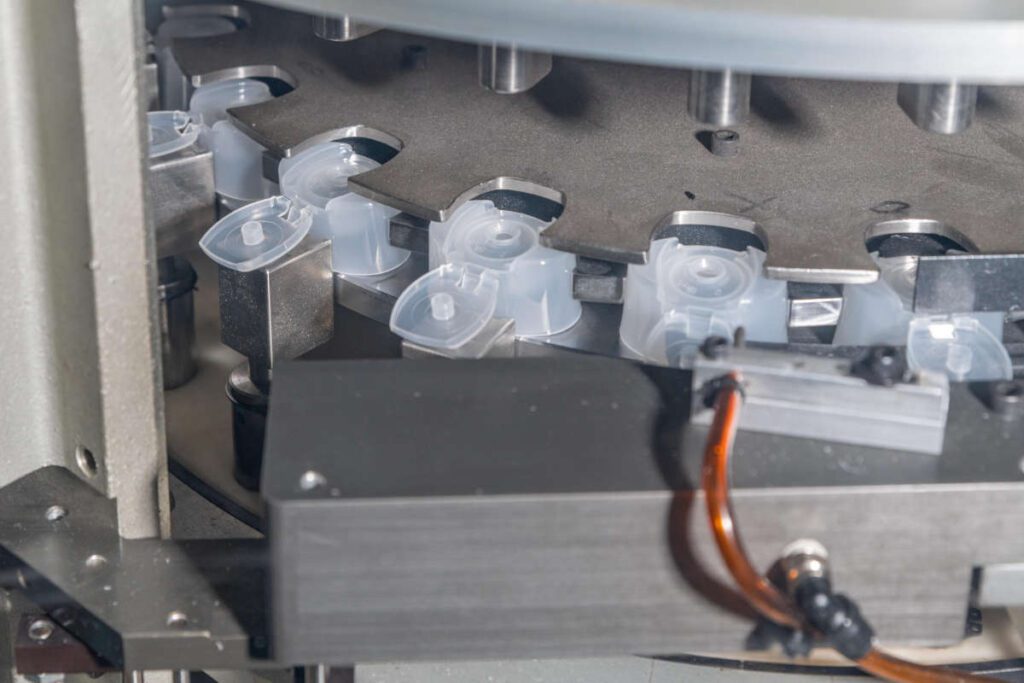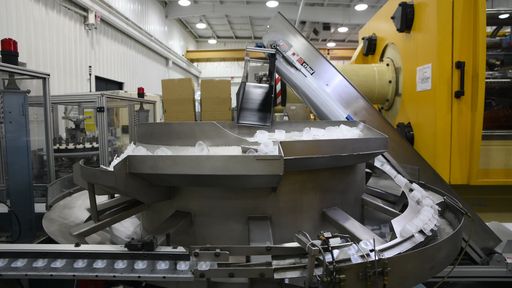Contact us at (630) 820-5550 to see how we can make the difference in your business.
Engineering
Insert Molding
HQC’s specialized insert injection molding machines save your company time and expense in taking a non-plastic material and molding plastic onto, into or around it.
Your business might have any number of reasons for including plastic insert molding:
- Decrease assembly cost.
- Attach plastic more reliably to the non-plastic part.
- Allow stronger non-plastic materials to be designed for wear and strength while the plastic part is used for more pliable areas, which often reduces the noise and stress of mating parts – i.e. the best properties of both materials are combined in one part.
- Benefit from insulation properties that allow electricity to flow through the metal while the plastic insulates from the surrounding areas (think of a plug used in a wall socket).
- Take an already manufactured component of a different material that has details and insert it into the plastic to create features such as threaded holes.

 While insert-molded products can be done in a standard molding press, a horizontal injection-molding press is not always a good option, as the inserts can fall out of the mold. This requires extra time for loading parts, causing the press to sit idle and cost time and money. Other common issues with standard molding equipment can be product inconsistencies and the possibility of part damage.
While insert-molded products can be done in a standard molding press, a horizontal injection-molding press is not always a good option, as the inserts can fall out of the mold. This requires extra time for loading parts, causing the press to sit idle and cost time and money. Other common issues with standard molding equipment can be product inconsistencies and the possibility of part damage.
HQC’s rotary presses let the inserts be placed into a mold that has a vertical clamp. Another of our presses has a horizontal clamp with a moveable injection unit that allows for injection at the parting lines of the mold instead of through the mold.
As the molds are closed and plastic is being molded, the other mold half has the part ejected and removed, and a new insert is loaded and readied to be molded. This safe and efficient process protects inserts from falling out and allows loading and removal movements to be done while the other mold is in use. You in turn save time and cost while ensuring greater consistency and quality.
In addition, the resins will often be engineered materials or materials with fillers and reinforcing additives such as glass-filled materials. These materials require the correct support equipment to dry and draw moisture out of the plastic before it is molded. HQC’s special equipment achieves this for you.
We use our insert molding process for many different markets such as industrial, appliance, automotive and medical. If needed, we can also set up molding cells for any pre- or post-molding operations to help reduce the cost of double-handling products.
Having these multiple capabilities in one facility further allows us to review insert-molded products with you onsite.
We will show and explain to you the many options of insert molding so you can see firsthand the process, the molds and the pre- and post-molding operations. This lets you decide what will be most cost-effective for your product. We are your partner and primary resource for insert injection molding with commodity and engineering resins alike. If you’re ready to save time and money on a better, more-reliable molded product, simply contact us to get started!